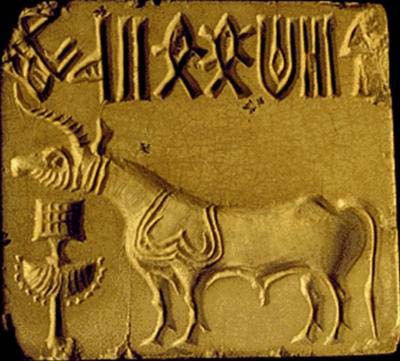The fascinating CRI article by Vikas Saraswat
"Indus Script: The no script theory is a non-starter"
encouraged me to dig a bit deeper and educate myself about the 2009 work of Prof. Rao and his fellow researchers at the University of Washington, which was discussed in the above essay, and how it was received by the scientific community. Posting my notes from some googling and research.
pictures link.
1. The Witzel-Farmer tag team's response was predictably condescending: discredit, going so far as to blast the journal for publishing what they felt was a phoney paper. There was hint of panic in their response which was framed almost immediately after Rao et al.'s work was published. Basically, they had a monopoly on such matters, and Rao's work shook their conclusions in a different way.
2. Rao et al.'s work has since spawned a sequence of counter and counter-counter papers by pro-language and anti-language groups. Here are two recent rebuttals (2010, pro), and a more recent one by the anti group (2013). We have a bit of a stalemate, which is not a bad thing, given how skewed the original scenario was.
3. The pro-group's publications rely on Shannon's work in information theory to calculate conditional entropy (as well as examining higher order of 'block' entropy) and bring into play other related mathematical laws to show that the probability of Indus script being a language has increased. They also counter the criticism that the briefness of texts is not conclusive ("absence of evidence is not evidence of absence", in their words).
Basically, these statistical models can tells us if there is just the right balance between order (low CE) and chaos (high CE) in the data. For example in English, if u fix 'Q', then probability of any other letter other than 'U' occurring after that is 0 (inflexible). However, if u fix 'Z', then there are multiple possibilities, but not all other 25 letters in the alphabet can occur next. Thus with language, there is some flexibility, but also some constraints on the sequences (pairs of letters at the simplest level) that can be constructed. CE is one of the metrics that captures this.
Data sets that exhibit too much order or too much chaos can most likely be rejected as non-languages. The Indus script passed the 'null hypothesis' test pretty well, while also exhibiting more helpful statistical properties that increase the chances of it being a language (by comparing the CE with other language and non-language data). This is why Rao's work got attention and was deemed worthy of publication. I read the whole thing and saw no hanky-panky.
(By the way, isn't this balance in language another beautiful illustration of Rajiv Malhotra's order-chaos concept?)
4. The anti-group's claims (and there are a few groups now, who appear to be more science-driven compared to Witzel-Farmer) was that such entropic methods can't conclusively discriminate between linguistic and non-linguistic data, and came up with their own data sets and conclusions. Then the pro-group came up with improved metrics, more data, to show stronger results in favor of the Indus script. However, what may be revealing is that the anti-group after lots of pages of scientific rebuttal (Jan 2013) invariably return to the 'curb appeal' argument: "Forget all the complex math. This is simple. Just look at it. The messages are too brief, so it can't be a language."
The evidence listed in Vikas' CRI essay, combined with the Witzel-Farmer duo's bad habit of mixing prejudice with science/math hurts the anti-group cause. Witzel doesn't do much of Sanskrit at Harvard now-a-days and was last seen hosting dead-beat Marxist seminars with sepoy Angana Chatterji, after she was fired from her previous academic job.
5. My own opinion is that the Hinduphobia of Witzel & co. caused them to reach a premature and gleeful conclusion a decade ago that our old desi ancestors were mass-illiterates. Rao et al.'s systematic work and improvements to their methods since 2009, *when taken together* with lots of other independent supporting material mentioned in the CRI essay has tilted the balance, and certainly given the Indus script theory another boost. Their opposition is working hard to come up with responses that out-think or at least, out-number the pro-group's output. What is clear is that a multi-disciplinary approach can be very useful in solving such problems.
This is not over yet in the minds of many in the west, but at least the playing field if a bit more level, though still loaded against India (thanks to Indian Gov's continued and bizarre acceptance of the now-discredited AIT). What is sad is that much of the publicized work is happening in western universities and not as much in India (though some is happening in TIFR, Chennai, etc.), whose heritage is the subject of the debate. Hopefully the next Indian government will not neglect the importance of such research, and increase funding for such worthwhile projects and staff them based on merit.


No comments:
Post a Comment